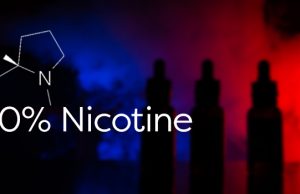World No Tobacco Day, which falls on May 31st every year, aims to raise awareness about the health risks of smoking and advocate for effective policies to reduce tobacco consumption globally. Initiated by the World Health Organization (WHO), who in most cases still fails to differentiate between the health risks from combustible and non-combustible tobacco, the event highlights the devastating impact of tobacco on public health and encourages efforts to achieve a tobacco-free world.
Countless Tobacco Harm Reduction-focused groups have spoken out on the event of these two dates, raising awareness on the right strategies to adopt in order to successfully decrease smoking rates globally. On World No Tobacco Day, the World Vapers Alliance (WVA) highlighted the widespread misperception surrounding tobacco harm reduction (THR).
According to Ipsos research conducted for the think tank “We are Innovation,” a staggering 74% of smokers globally incorrectly believe that vaping is as harmful or more harmful than smoking. This misinformation deters smokers from switching to vaping, a scientifically proven, 95% less harmful alternative.
CoEHAR gives a voice to the younger medical generation
While at the CoEHAR annual meeting for World No Tobacco Day 2024, resident doctors, PhD students, young researchers, and masters students shared insights from their diverse environments including schools, universities, hospitals, and research labs. Directed by Professors Riccardo Polosa and Giovanni Li Volti, the conference shifted its focus to prioritize the voices of young people.
The seminar covered various thematic areas, promoting an open and participatory debate. Topics ranged from clinical practices shared by resident doctors in Emergency Medicine to discussions on smoking as a psychological and behavioural addiction and its impact on social relationships and couples. The seminar also explored the role of new technologies, such as artificial intelligence, in developing effective cessation strategies.
Additional discussions included doctors’ approaches to smoking patients, the health and physical impacts of smoking, dietary considerations to combat cravings. Other topics discussed involved the influence of social contexts, smoking-related infectious diseases, alternative products, harm reduction strategies, and the need for accurate information and reduced biases in scientific research.
While in recognition of World Vape Day, the Coalition of Asia Pacific Tobacco Harm Reduction Advocates (CAPHRA) called on global leaders to acknowledge the life-saving benefits of safer nicotine products and to counteract the disinformation spread by the World Health Organization (WHO) on the topic. CAPHRA urged all stakeholders, including policymakers, public health officials, and the media, to acknowledge the science and truth about THR.
Nancy Loucas, a noted public health consumer advocate from New Zealand and executive coordinator of CAPHRA, highlighted that products like e-cigarettes, snus, and heated tobacco products (HTPs) provide crucial alternatives for smokers seeking to mitigate health risks. Reports from the Global State of Tobacco Harm Reduction (GSTHR) demonstrate these products’ effectiveness in reducing harm and their significant public health benefits by offering accessible options to smokers globally.
Big Tobacco on World Vape Day
It is no secret that tobacco companies are working hard to restore their image by transitioning to non-combustible products like e-cigarettes, nicotine pouches, and heated tobacco. This shift is part of broader efforts to position themselves as part of the solution to smoking cessation, seeking to improve public perception and regulatory standing.
In the event of World Vape Day, Dr James Murphy (BAT’s Director of Research and Science) also wrote an op-ed on the importance of global alignment on health policy to make a smokeless world a reality.
Murphy highlighted that with renewed global focus on smoking and vaping regulation, now is the time to achieve smoke free ambitions and make cigarettes obsolete. This requires a global consensus on effective THR strategies, which offer a significant public health opportunity for smokers to transition from combustible tobacco products to smokeless alternatives.
He accurately added that countries that have embraced THR, such as the US, UK, Japan, and Sweden, have achieved record low smoking rates. Sweden, for example, is set to be smokefree by the end of the year, far ahead of the EU’s 2040 target. However, many countries still restrict access to smokeless products, limiting the potential for THR to reduce smoking rates. Only 40% of the population in the 15 most populous countries can access these alternatives, leaving millions without options to switch.
This year’s take-home message
Misconceptions about the safety of non-combustible nicotine and tobacco products compared to cigarettes persist, and sadly, in some cases are even increasing, with many smokers wrongly believing that safer nicotine alternatives are as harmful, if not more, than smoking. All stakeholders agree that an inclusive, open dialogue among policymakers, regulators, and the medical community is necessary to prioritize THR and improve public health outcomes worldwide.












